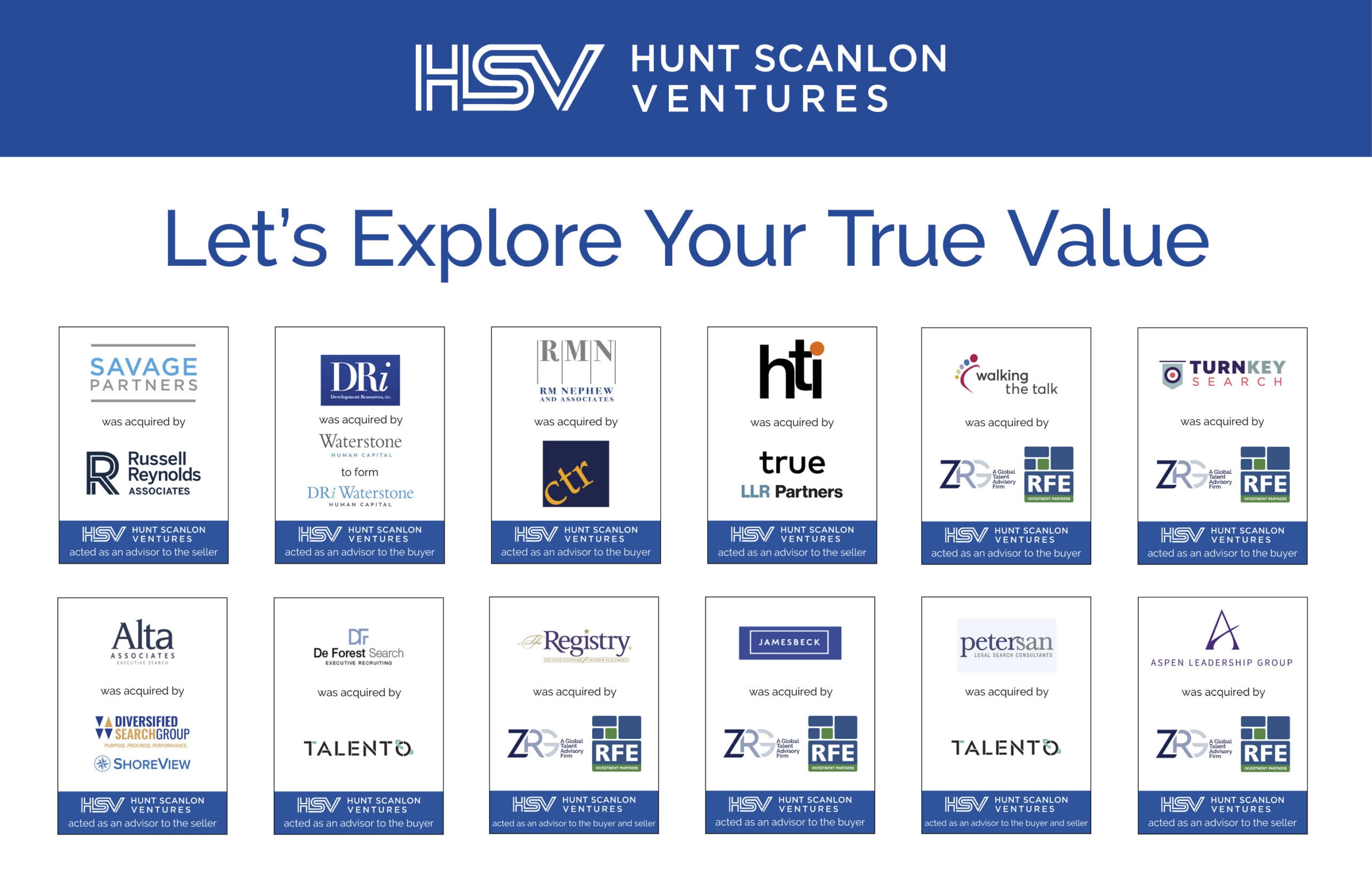In the ultra-competitive world of M&A, bleeding talent through the acquisition process can be a serious concern. Cody Crook, managing director at Hunt Scanlon Ventures, discusses an often-overlooked risk of the M&A process.
In a just-released report, Talent Flight: Overlooked Risks During M&A, KPMG chronicles the major risk that talent flight presents to effective M&A. In today’s labor market, experienced and proficient employees have plenty of prospects. With talent in high demand, the risk of flight is more serious than ever.
Given the abundance of options, replacing those who decide to leave may incur greater expenses and require more time than in the past. And a mere company-wide memo will not be enough to keep the most talented people on board.
Maintaining an intact work force through an acquisition is no small task. In its analysis, KPMG found that acquired workers are about twice as likely to depart than those who were hired directly with similar profiles.
The average employee attrition rate for the two years before the announcement of an acquisition ranged from 32 to 36 percent. In the two years following an announcement these numbers sky rocketed to sit between 55 and 71 percent. Losing such a significant portion of a workforce can have devastating impacts that go far beyond the loss of a single executive.
While many dealmakers understand the importance of retaining top executives, many overlook the equal importance of retaining the technical and functional talent that keeps a business humming. In fact, the most capable and essential employees often pose the greatest risk of leaving as they tend to have the most opportunity elsewhere.
Preventing Talent Flight
To prevent talent flight, acquirers must utilize a holistic approach to talent retention. According to KPMG, sophisticated acquirers tailor their approach to meet the circumstances and needs of specific employees.
In some cases, this may include limiting integration to maintain a hard-to-reach homeostasis, or even adjusting processes within an acquirer to fit the cultural needs of a target. While compensation is important, a holistic approach to retention goes beyond financial incentives.
Positive recognition, productive culture, clear career paths, and a path to development are all powerful motivators that acquirers must leverage to prevent talent flight. The data reflects the importance of utilizing these levers effectively. In fact, KPMG research has shown that when deals fail to meet targets the most likely reason by far is a lack of buy-in among execution teams across the target organization.
Following are excerpts from a recent discussion with Cody Crook, managing director of Hunt Scanlon Ventures. Cody unpacks what this all means for closing and successfully integrating mergers and acquisitions.
Cody, what is your biggest takeaway from KPMG’s latest insight?
I really appreciated KPMG’s discussion of culture and the importance of finding a cultural fit within a target organization during an M&A transaction. Nothing matters more to a finely tuned integration process than culture and that focus starts on the first day two company leaders come together to discuss a merger. In our experience at Hunt Scanlon, culture can appear so intangible, making it difficult to account for in diligence and integration. KPMG notes that by utilizing developments in big data we can finally bring a scientific approach to measuring culture. Using a data-driven approach, acquirers can go as far as to measure cultural adaptability within an organization, which can ultimately prove more important than cultural fit. I like that. I think this is the direction in which we in the dealmaking business are heading.
“Nothing matters more to a finely tuned integration process than culture and that focus starts on the first day two company leaders come together to discuss a merger.”
What else stood out?
I found the three-pronged approach to talent retention that KPMG laid out thought-provoking. Their analysis did an excellent job of explaining how effective retention planning should cover securing key talent in the near, middle, and long-term. If an acquirer’s lens becomes too narrow, they risk fixating on retaining talent immediately after announcement, only to find that their retention plan was lackluster in the middle term.
How can organizations construct a balanced approach to retain employees in the short, middle, and long-term?
While a workforce can be retained through bonuses in the short term, this is not a sustainable solution in our view. Therefore, the middle and long-term periods require a more strategic approach. This is when maintaining clear career paths and continuing professional development for acquired employees becomes incredibly important. If employees don’t see a clear path to promotion in their new organization or feel that they aren’t being developed professionally then they are likely to leave in the middle or long-term.
So, what’s the best way to handle this?
It is so easy for acquired talent to feel as though they exist in a separate silo from the rest of their new organization, and that there may be a ceiling on how high they can rise. Having clear communication around how this will not be the case and making the path to promotion uncomplicated will go a long way towards talent retention in the middle and long term. Additionally, making opportunities for professional development readily available will work as a more sustainable incentive than bonuses for talent retention.
Why is cultural adaptability so important?
It’s hard to find a perfect fit between an acquirer and a target culturally-speaking. We spend so much time at Hunt Scanlon focusing on this day in and day out. For us, finding the best fit between two businesses is where we have our team spend an inordinate amount of time. That upfront time spent increases the likelihood of a successful transaction. In many M&A scenarios, of course, operating models and cultures often will have to change and morph to meet the moment. It is more complicated to pull off a successful merger than most people give credit to. But to your point, if growth projections are to be met, key talent must be retained. If an acquirer can demonstrate that the target has a high level of cultural adaptability, they can be more confident that the talent they have in place will stay there through the acquisition, even in a case where the two firms aren’t a perfect fit culturally.
Article By

Cody Crook
Cody Crook is managing director and head of investment strategy at Hunt Scanlon Ventures - an M&A advisory firm that specializes in the human capital space. Cody is responsible for co-managing the firm's investment portfolio, which includes executive search, talent acquisition, private equity, and investment firms. Leading the investment team, he spearheads all fund transactions and maintains portfolio developments. He is also responsible for sourcing, managing and monitoring investments and working with external portfolio managers, analysts and investors on active and prospective transactions. Connect with Cody.





